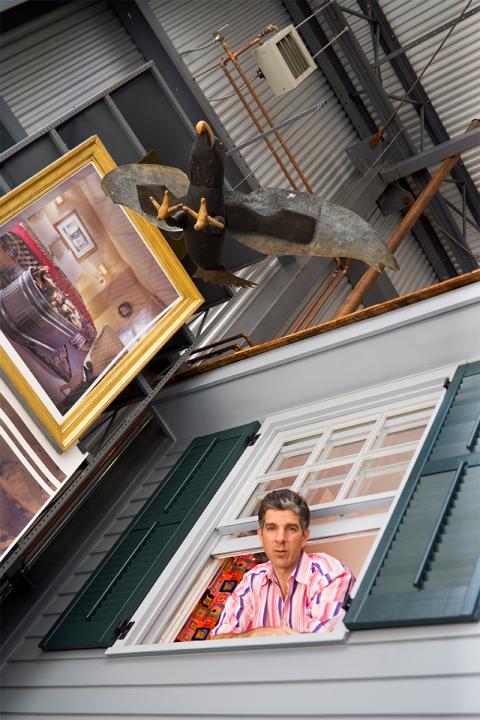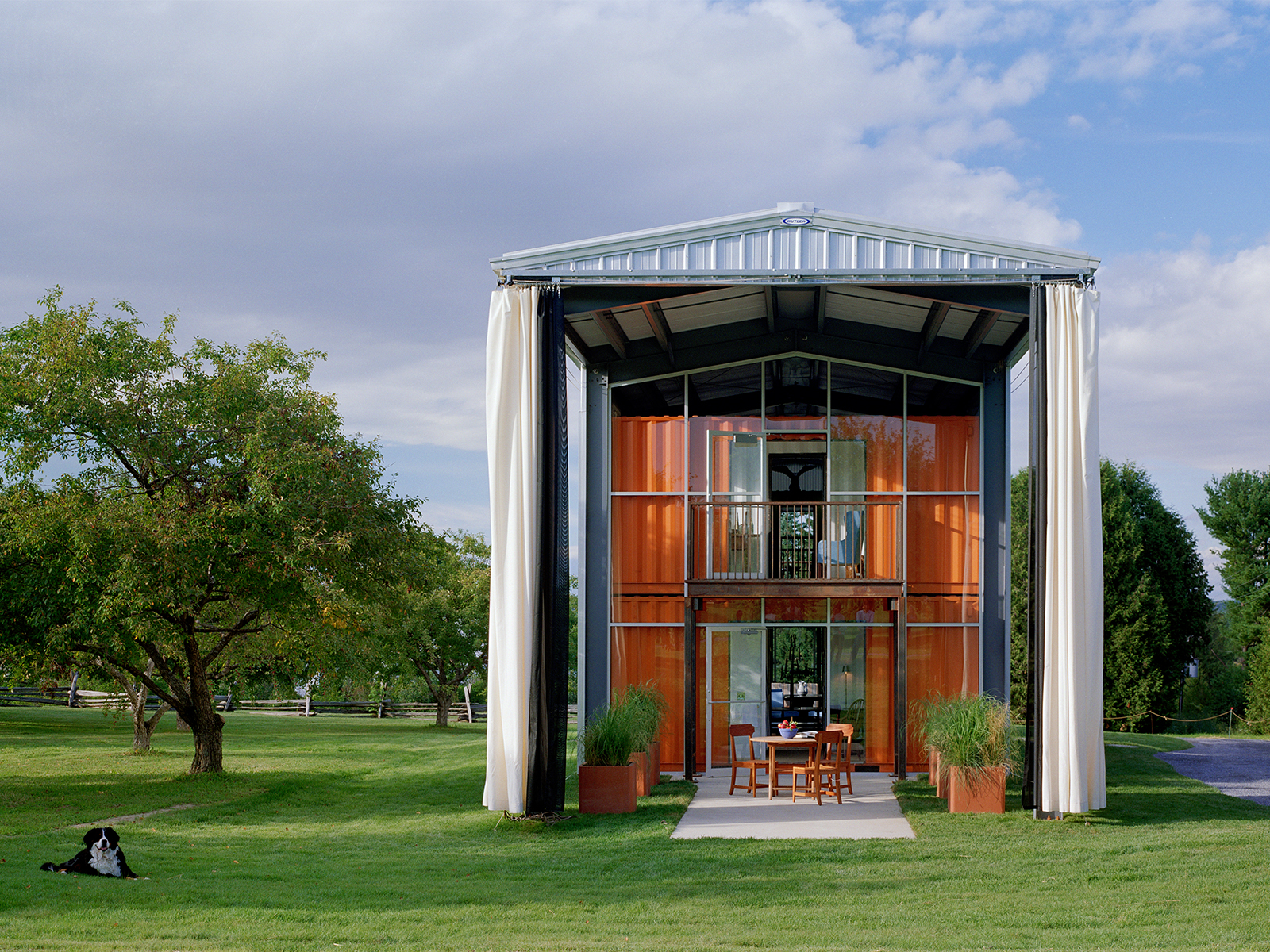Adam Kalkin ’84
This year, the Alumnae/i Association, AAVC, turns 150. Throughout 2021, the College will be celebrating this anniversary by highlighting a few of Vassar’s most notable alums in architecture, arts, business, education, entertainment, health care, humanitarian efforts, law, social justice, and technology.

Occupation:
Artist, architect, innovator, author
Accomplishments:
Ask Adam Kalkin what he does for a living, and you’re likely to get an answer like this: “I’m an artist and an architect and many other things. I use architecture as a vehicle to test new ideas.”
Kalkin doesn’t just think outside the box—he reimagines it. Over the past 20 years, he’s become known for the mind-blowing structures he has made all over the world using old shipping containers as building blocks. His projects include private homes, such his own New Jersey residence called Bunny Lane; a museum in Vermont; an eco-orphanage for an NGO in South Africa; and a “push-button” house in which computer-controlled hydraulics fold open the sides of the container, revealing a six-room unit complete with kitchen and bathroom fixtures. The Push Button House he made for the international coffee company illycaffè debuted at the 2007 Venice Biennale, where visitors were invited to step inside and have a cup of espresso.
“I have a lot of ideas and I like to test them in the real world,” Kalkin says. “First I’ll say it, then I’ll write it, then I’ll draw it, then fund it, then make it. I want to see how far you can actually take ideas with real world constraints. Sometimes the ideas dead-end, but sometimes they go further than you’d think.”
Kalkin says that over the years, he has built a network of highly skilled associates who help him turn his ideas into reality. “I love working with smart, talented people who take risks with their work,” he says.

Of course, being a risk-taker means you must accept a high failure rate, says Kalkin: “I develop things as ideas first and the mortality rate is very high, but it’s part of the process.” For example, he created a “disaster relief swat team” that could provide emergency housing and other needed services around the world in times of crisis; but it was stymied by government bureaucracy. “The first thing you do when you start to work with the government is they send you a thousand pages of paperwork,” he explains. “There was no room for process improvisation—and what disasters need is precisely ad-hoc thinking and improvisation.”
Looking Back:
Kalkin remembers Vassar as a place where creative thinking flourished. “Vassar was a great place, very student oriented—I had a great time there,” he recalls. Kalkin resided in Main House and double-majored in English and philosophy. “I like to read books and have obscure thoughts, so that seemed to be a good combination,” he says. Though he didn’t become interested in architecture until after he graduated, he did take art classes. “I started to paint at Vassar,” Kalkin notes, “and then I started to sculpt. And containers came into my sculpture and conceptual artwork before it came into my architecture.”
Looking Forward:
Kalkin’s current projects include: a rocket-manufacturing facility for a Department of Defense subcontractor engaged in launching low-orbit satellites (“Oh, whatever, it’s not that interesting,” he demurs); a private residence in Kuwait; and what he’s most excited about: a “multidisciplinary incubator in technology and architecture” that will innovate in areas that are “ripe for disruption”—mainly music and education. All he will say about the nascent project right now is, “We’re going to develop de novo platforms in broken fields like education, architecture and health.” But before anyone gets too excited, he warns that it may not work out. “Look through my work and you will see there’s a 90 percent mortality rate,” he cautions, “so this will probably fail also—but you just have to go forward bravely and stupidly and optimistically,” he says. “I think it’s always healthy to take chances and do new things.”
Learn more about Adam Kalkin and his work.